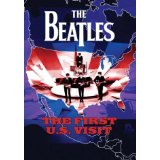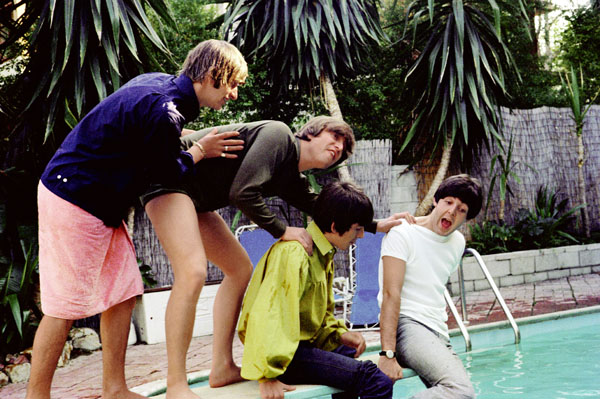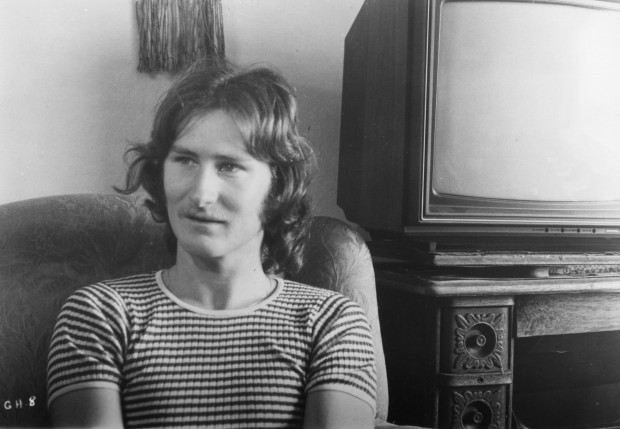
Now on sale as both a paperback and e-book: http://booklocker.com/books/6965.html Also available from Amazon and other online book sellers.
“Documentary 101: A Viewer’s Guide to Non-Fiction Film” is a first-of-its-kind anthology, covering the entire spectrum of non-fiction film from 1895 to the present day. There are 101 full-length reviews of documentaries chosen for their aesthetic prominence and/or historical significance, followed by briefer entries on related titles. There are 325 total reviews and an informational appendix in its 418 pages.

Several notable rock festival documentaries—”Woodstock”, “Monterrey Pop” and “Gimme Shelter” being the most famous—not only capture the giants of their genre in a live setting but also serve as sociological snapshots of their era. But in the half-generation that preceded those events, it was the annual Newport Jazz Festival that was the place to be for city hipsters and savvy suburbanites alike… Director Bert Stern quickly establishes the breezy carnival atmosphere of the 1958 edition of the festival as a moderately rebellious beatnik crowd blends into the gauzy, Eisenhower-era comfort zone with relative ease. The concert footage starts with Anita O’Day entertaining an afternoon crowd of more-formally dressed folks with some wild scat singing during her elaborate deconstructions of “Sweet Georgia Brown” and “Tea for Two.”
(Jazz on a Summer’s Day, 1959)
*************************************

It would be difficult to imagine a documentary style more personal than the one behind the Oscar-winning “Best Boy”. Director Ira Wohl followed his fifty-two-year-old developmentally disabled cousin Philly for three years, during which he gained a measure of self-reliance and entered the outside world for virtually the first time. It was Wohl himself, convincing Philly’s loving but elderly parents that their son should prepare for the time when they were not around anymore, who prompted this move to greater independence. Pearl and Max, are the very image of stoic, uncomplaining people of modest means who got along playing the hand that was dealt them. “If God wants to punish someone, he should only punish them with retarded children,” Pearl says, but even this comment seems free of bitterness.
(Best Boy, 1979)
**************************************

When Munich was chosen as the site of the 1972 Summer Olympics, World War II was not that far in the past, and neither were the sour memories of the 1936 “Hitler” Olympics in Berlin. So the event organizers were determined to show the world the modern liberal-democratic face of West Germany. But instead of the “Olympics of Serenity,” they got a globally televised nightmare when Palestinian terrorists invaded the athletes’ village, kidnapping and eventually killing eleven Israeli sportsmen. In his riveting film about the tragedy, director Kevin MacDonald views it as a watershed moment in mass media and as a momentous debacle of West German incompetence. For many Americans, when all those cameras turned away from the competition to focus on the sudden hostage story, it would be their first close-up view of international terrorism.
(One Day in September, 1999)
**************************************

Werner Herzog’s “Fitzcaraldo” was the based-on-real-life story of an eccentric impresario whose goal in life is to build a grand opera house in the deep Amazon backcountry and have Enrico Caruso sing there. In the script, Fitzcaraldo is faced with navigational difficulties in the pursuit of that goal and decides to have his hired hands haul his three-hundred-ton steamship up and over a mountain ridge to a parallel river. Herzog hired local men as extras to do just that, spurning the idea of doing a process shot, bringing the art of cinematic realism to a new extreme. The easygoing Les Blank was just the man to coolly record the monomaniacal impulses of both Fitzcaraldo and Herzog (“I live my life and I end my life with this project,” the director tells us at one point) and deftly examines the dizzying heights and desperate depths that such an attitude will lead to. “I don’t want to live in a world where there are no lions anymore,” Herzog says at one point. Yet with the coming age of demographic targets, played-down-to audiences, test endings, and the like, it is little wonder that those of Herzog’s ilk found it ever more difficult to foist something like the beautifully crazed fever dream of Fitzcaraldo onto to the public. But as Herzog puts it, “all these dreams are yours as well.”
(Burden of Dreams, 1982. Werner Herzog is pictured on the set of “Fitzcaraldo” in a photo taken by Blank’s trusty editor and sound recordist, Maureen Gosling)

Almost two hundred years after Captain Cook discovered New Guinea, French explorers set out for the same island, most of which has changed little since the Stone Age. Although director and expedition leader Pierre-Dominique Gaisseau contemplates the different eras as he stares out the jet window (“distances have lost their meaning”) this is no week at the beach. His group is to bisect the island on foot, a distance of 450 miles (150 of them uncharted) and an area still replete with headhunters and virtually impassable jungle growth. Gaisseau’s journey into “blank spots on the map” is memorable; the team deal with dense masses of undergrowth, monstrous rivers, and days spent nervously negotiating the island’s formidable central ridge, which tops off at 12,000 feet. Just as risky and unforgettable are their meet-ups with indigenous warrior tribes little changed since the days when Cook and his crew beat a hasty retreat from the island.
(Sky Above, Mud Below, 1961)































